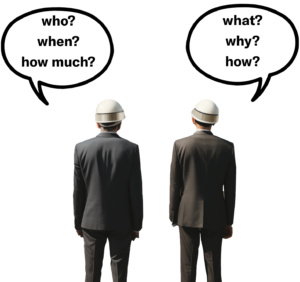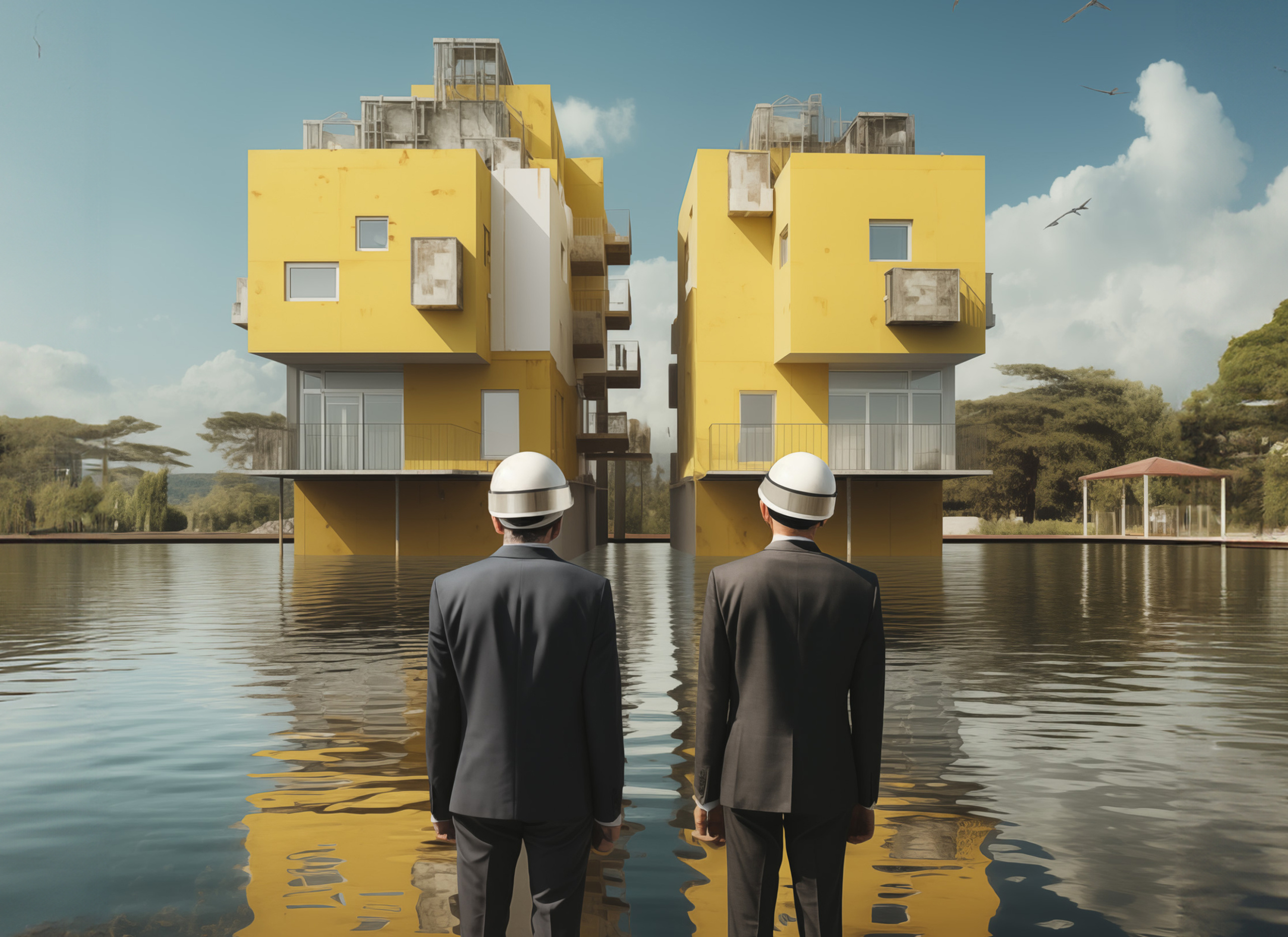Architect VS Project Manager
If you’re looking for a short and simple definition, then you can say that the architect is an “artist with his head in the clouds who draws pictures, focusing on aesthetics and visual representation”. And the project manager is a “secretary who ensures tasks are completed in time and within budget, who only knows how to ask when it’s going to be ready and how much it costs”.
In practice, the division of duties is that the architect plans the project, analyzes the building regulations and develops the program with the client. He is responsible for coordinating his design with the team of consultants (constructor, plumbing, air conditioning, electricity, etc.), takes care of licensing – plan approval and building permit.
The products of his work are blueprints and specifications, according to which the project is built. During construction, the architect supervises on-site, particularly at critical stages, as needed, to oversee the building process until the project is finished and occupied.
A project manager is responsible for managing the budget and schedules, which he coordinates with the client, the architect, and the team of consultants. During the project phase, he is responsible for recruiting the team of consultants, coordinating and summarizing meetings, and approving payments. He is a professional coordinating factor, ensuring good communication between all parties involved in the project.
The products of his work are summaries, reports, Excel files – calculations of quantities, and Gantt charts.
During the construction and supervision phase, he issues the design to contractor tenders and is present at the site and accompanies the construction until the completion and project delivery.
Sometimes the entrepreneur hires external project management, and sometimes the project manager is an engineer working in the entrepreneurial company. This is a simpler situation, because the client and the project management are actually one entity.
The project management in the planning phase can also be done by the architect if he is willing to take the administration under his care, since he is in any case a leader and knowledgeable in the project. The construction management phase is usually done by a project manager or the construction inspector, who is a civil engineer.
In fact, in the past, the architect was the main person responsible for project as well as construction (architect means “master builder”). But from the 19th century onwards, the field of construction passed to the responsibility of engineers, and over the years, the field of construction management and project (design) management also passed to the responsibility of construction supervisors and project managers.
In an ideal situation, the architect and the project manager work together as a team. Both know the design and construction processes in depth and are able to find the right balance that considers design and quality against time and money, ultimately ensuring the project’s success.
The conflict between these two professionals begins when the responsibilities and roles overlap, and when the question of authority begins to surface – “who is subordinate to whom.” Is the architect the project leader who connects the client and all the professionals involved, or is the project manager the coordinating figure between the client, designers, and contractors, and is the one who centralizes all the consultants under him, with the architect being one of them? The concentration of the budget in the hands of the project manager reinforces this concept because the project manager approves the client’s payment to the architect.
To avoid such a collision, reliable and transparent teamwork and the ability to solve problems quietly and quickly are very important.
Today, there is a risk that the processes of making design decisions, formulating programs, budgets, and schedules may be made without the architect. These processes may become confined solely between the client and the project manager, focusing primarily on time and monetary considerations. Measurable criteria alone, without the professional experience of the architect in these areas, and may affect the quality.
In order to change this situation, architects must lead the design, understand and control also the costs and construction methods, the practice and not only the aesthetics, and manage the processes they are involved in.

